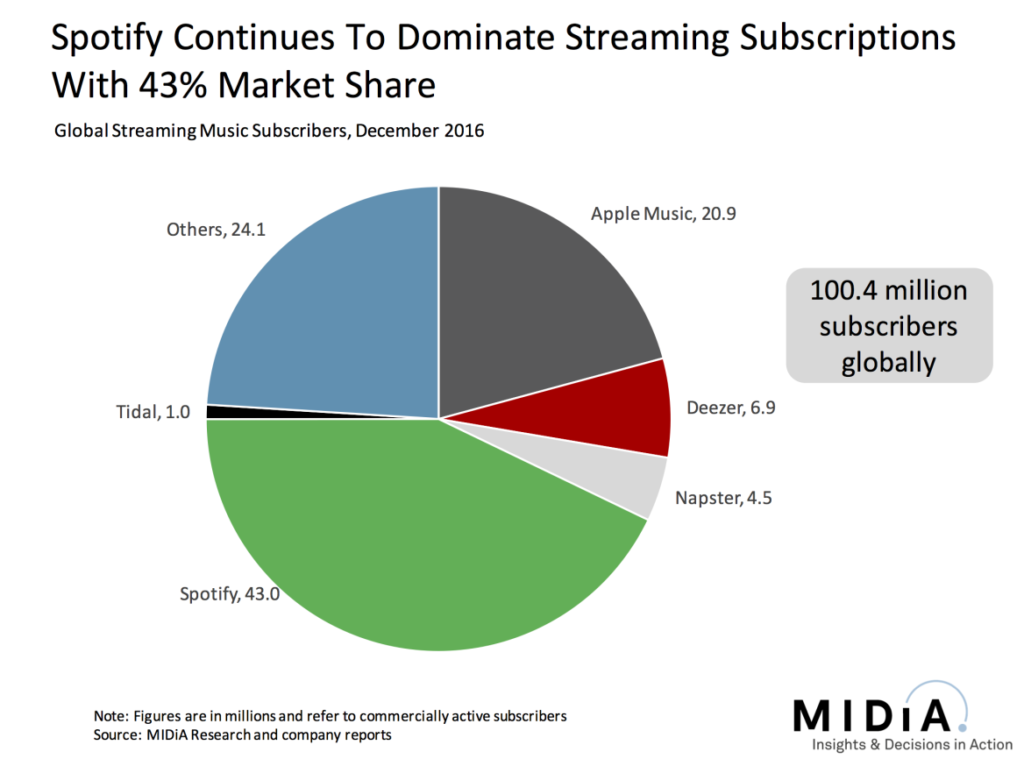Could the new Apple HomePod triple artist revenues?

During its Developers Conference (WWDC) in California, Apple announced HomePod, its voice-activated loudspeaker powered by its virtual assistant Siri.
Apple’s first new device in almost three years (since the Apple Watch) has been pitched first and foremost as a music player. But Siri can also respond to questions, read the latest news, play podcasts, set reminders and control smart home features such as lights.
Set to cost around AU$465, you’d be forgiven for thinking HomePod is just a glorified (and rather expensive) bluetooth speaker. But you’d be wrong.
HomePod is similar to Amazon Echo and Google Home, but with its music player focus and deep integration with the Apple Music, it does contrast the approach of the aforementioned, which have been pitched as day-to-day-assistants.
In fact, the launch of HomePod in December is great news for lower to middle-tier artists who currently aren’t living off their music.
Let’s break it down: although an exact figure on how much money per play is given to artists hasn’t been released (as rates vary from country to country, and streaming service to streaming service) we are told by artist managers that the average return for an artist is $5,000 per million plays, give or take a few hundred dollars. And according to The Trichordist, currently steaming services pay “thousands of dollars” per million plays.
With the introduction of a high-quality smart speaker, Apple is going to tear down barriers for non-streaming service users, HomePod’s voice activation focus means even grandmas and grandpas will conceivably be streaming music within the next 12 months.
In two years time, HomePod could potentially catapult Apple Music from a 20% market share to an 80% market share as streaming becomes just another household utility in line with water and electricity.

Not only would this take market share from Apple’s competitors, but it would introduce en masse new users into the streaming world that previously never would have signed up for a service. From soccer mums to just casual music listeners, when they come flooding in like we expect they will, it will bring much more revenue for all artists, not just the already successful ones.
The more Siri responds to questions like “play me dance music”, and “play me Sunday morning mood music”, the more opportunities arise for artists to have their works played, exposed to new audiences, and added to coveted playlists.
The more we stream music, the faster artists reach the 1 million plays mark. If an artist achieves this goal every month, we could soon see a middle class of musicians who aren’t necessarily mainstream famous, earning a respectable wage and living off their art.
The shift toward voice-activated speakers is already building in the US thanks to Amazon Echo and Google Home. Research firm eMarketer noted more than 35 million people in the US are expected to use a voice-activated speaker at least once a month this year, more than double its estimate from last year.
However, HomePod wouldn’t be an Apple device if it didn’t have ambitions to corner the market. Currently, the only streaming service the speaker is compatible with is Apple Music.
wait… so HomePod is all about good audio but it aint got no Spotify? why you gotta do me like that Apple? why?
— Casey Neistat (@CaseyNeistat) June 6, 2017
HomePod is on sale this December in the US, UK and Australia and will set you back about AU$465 – almost double the cost of Amazon’s Echo which sells for AU$240. Meanwhile, Google’s Home speaker goes for AU$170.
This article originally appeared on The Industry Observer, which is now part of The Music Network.






























